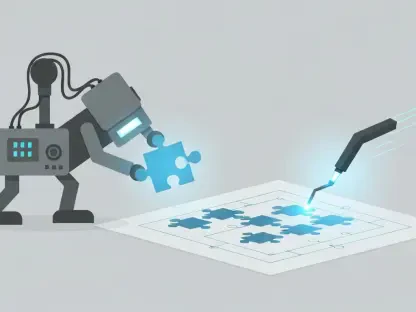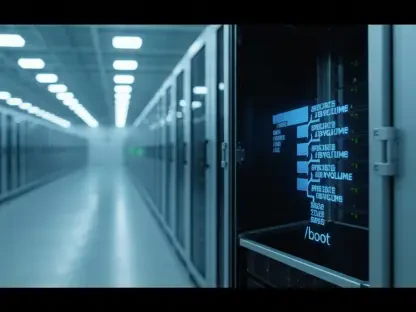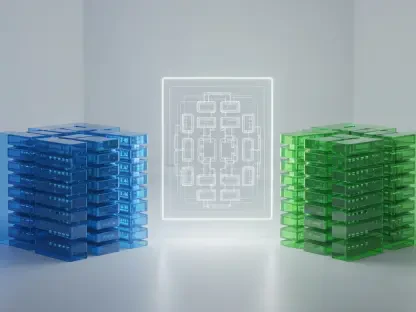In the swiftly advancing realm of artificial intelligence (AI) and software development, Policy-as-Code (PaC) has emerged as not only relevant but indispensable. AI technologies, such as ChatGPT and GitHub Copilot, have revolutionized coding, enabling rapid development with machine-generated code. However, with this convenience come challenges related to governance, security, and compliance. As software systems become intricately complex, maintaining oversight becomes increasingly difficult, emphasizing the critical need for automated policy enforcement tools like PaC. PaC enables organizations to embed security and compliance protocols within their development processes, ensuring that rules are followed automatically across diverse systems. By converting policies into machine-readable formats, companies can manage the volume and complexity of modern infrastructures. The question of relevance is swiftly transforming into one of necessity as these automated systems effortlessly handle immense data, making PaC an essential pillar maintaining balance in the fast-evolving tech landscape.
Definition and Emergence of Policy-as-Code
Policy-as-Code is an approach that redefines traditional governance models by implementing policies through executable code. It gained traction in response to the limitations of manual policy enforcement within dynamically scaling IT infrastructures. When Infrastructure as Code (IaC) systems began managing vast networks, the manual analysis and application of policies couldn’t keep up with the pace. PaC automates these processes, allowing for the seamless integration of security and compliance measures into IT workflows. By embedding regulatory and operational policies directly within infrastructure, PaC ensures consistent rule enforcement and reduces the likelihood of human error. As infrastructures have grown in complexity and speed, the importance of a systematic way to manage and encode policies has become increasingly apparent. Without PaC, organizations run the risk of policy violations as deploying numerous cloud instances manually can lead to inconsistencies due to oversight or errors inherent in manual processes.
The Role of PaC in Declarative Systems
In environments that utilize declarative systems like Kubernetes and Terraform, Policy-as-Code strengthens flexibility, ensures security, and maintains compliance without sacrificing efficiency. Declarative systems specify the desired outcomes without detailing the steps—a feature that accelerates development but poses challenges for policy enforcement. In such contexts, PaC ensures that defined policies are upheld across varying ecosystems while maintaining compatibility with existing development workflows. Human-readable code offers transparency, enabling clearer communication and understanding among all stakeholders, including security teams, developers, and compliance officers. This collaborative approach ensures all processed code complies with required standards. Automated PaC solutions enhance consistency across different environments, providing real-time intervention against policy breaches. This capability becomes vital to handle complex systems comprising various components, like CI/CD pipelines and Kubernetes clusters, ensuring they operate under defined guidelines and reducing misconfigurations.
Need for Policy-as-Code in AI-driven Development
As AI-generated code becomes more prevalent, organizations face increased risks associated with security vulnerabilities and non-compliance with regulations such as the General Data Protection Regulation (GDPR). AI models can produce efficient code quickly, but without oversight, they may inadvertently introduce weaknesses or fail to meet compliance criteria. Policy-as-Code becomes essential in scanning and assessing AI-generated code to identify and mitigate potential security flaws before they can be integrated into production environments. By automating these checks, PaC minimizes risks associated with the AI-driven development process, ensuring a preemptive defense against vulnerabilities like insecure endpoints and data breaches. This automated oversight guarantees that the implemented code aligns with the established security and compliance frameworks. Given the continuous evolution of AI technologies and their increasing sophistication, integrating PaC provides an adaptive, iterative process that guards against both current and emerging threats in the software lifecycle.
Human-Centric Policy Enforcement and Ethical Considerations
The integration of PaC into AI-driven development processes extends beyond technical compliance and security. It fulfills a broader role by enforcing ethical standards and human-centric values, such as privacy and fairness, reflecting societal and organizational principles. Despite AI’s capabilities in processing data and optimizing solutions, it lacks the ability to apply ethical judgments, which are critical in preserving these values across development processes. Through PaC, human intentions and ethical considerations are encoded into the AI’s operational framework, ensuring that AI applications adhere to both internal corporate guidelines and external legal mandates. This coding in PaC ensures the AI’s operations reflect ethical standards and are audited transparently, meeting legislative requirements like the European Commission’s EU AI Act. By embedding these human-centric policies, PaC provides a reliable structure that governs AI while maintaining accountability, addressing societal expectations, and adhering to legal regulations in a rapidly evolving AI landscape.
PaC as a Dynamic Framework in AI Ecosystems
Policy-as-Code adapts in tandem with AI advancement, especially as AI systems grow more autonomous and complex. The emergence of Agentic AI systems, capable of making independent decisions, necessitates intricate policy enforcement frameworks that align with the speed and complexity introduced by these technologies. PaC determines acceptable actions and decisions within these systems, ensuring necessary checkpoints and introducing human oversight for potentially critical operations. By integrating with model context protocols, PaC outlines operational parameters, controls data access, and ensures compliance with regulatory directives, thus protecting sensitive information. It further ensures safe interaction in Agent-to-Agent ecosystems, requiring the establishment of consistent authentication protocols and data-sharing standards. Through PaC, AI systems maintain secure, regulated interactions, assuring that all operations comply with set guidelines across interlinked systems. This capacity underscores the importance of having a robust, evolving framework that supports the responsible deployment of advanced AI technologies within various domains.
Integration and Evolution of PaC with AI
As AI technology collaborates with policy implementation, a synergistic relationship develops, enhancing both fields. AI’s role in drafting preliminary policy templates is about more than automating processes; it involves adapting these drafts to regulatory changes and evolving organizational needs. After AI drafts these templates, human experts refine them for strategic alignment and ethical considerations. PaC tools then serve as a mechanism for policy enforcement, creating a continuous feedback loop that informs AI about optimal policy designs refined by human input. This ongoing cycle leverages AI’s rapid processing capabilities and human expertise to establish refined, context-aware policies. By synergizing AI processing strengths and human judgment, organizations can create comprehensive frameworks, ensuring their technological ecosystems align with current standards and ethical norms, fostering a secure and efficient development environment. This collaboration enables an adaptable, resilient system, responsive to regulatory changes and emerging technological advancements.
Conclusion: PaC as an Imperative in AI Governance
In the rapidly evolving world of artificial intelligence (AI) and software development, Policy-as-Code (PaC) is gaining crucial importance. Technologies like ChatGPT and GitHub Copilot have transformed coding by allowing machine-generated code to expedite development. Yet, these advancements bring challenges regarding governance, security, and compliance. As software systems grow increasingly complex, maintaining oversight becomes harder, underscoring the need for automated policy enforcement like PaC. PaC lets organizations embed security and compliance protocols directly into their development processes, ensuring rules are followed automatically across varied systems. By converting policies into machine-readable formats, companies effectively manage the scale and intricacy of modern infrastructures. The question surrounding PaC has shifted from relevancy to necessity, as these automated systems handle vast data effortlessly. PaC thus stands as a vital pillar upholding equilibrium in the ever-changing tech landscape.









